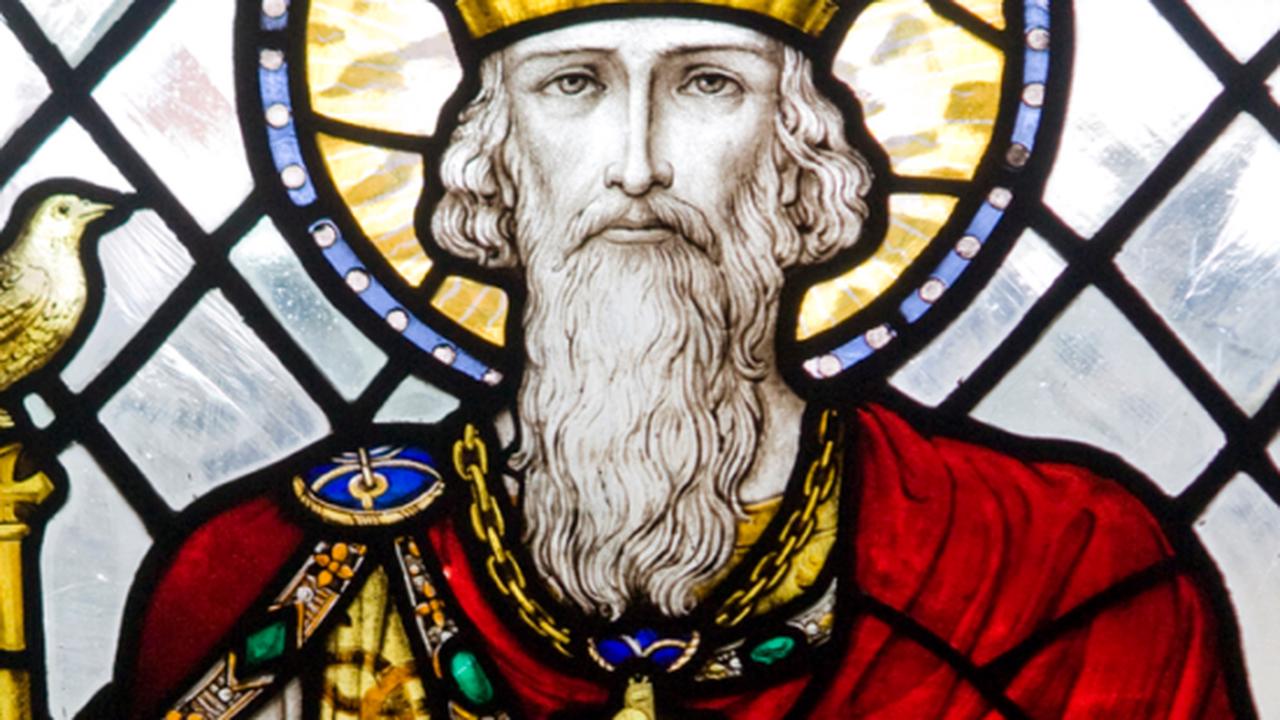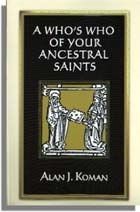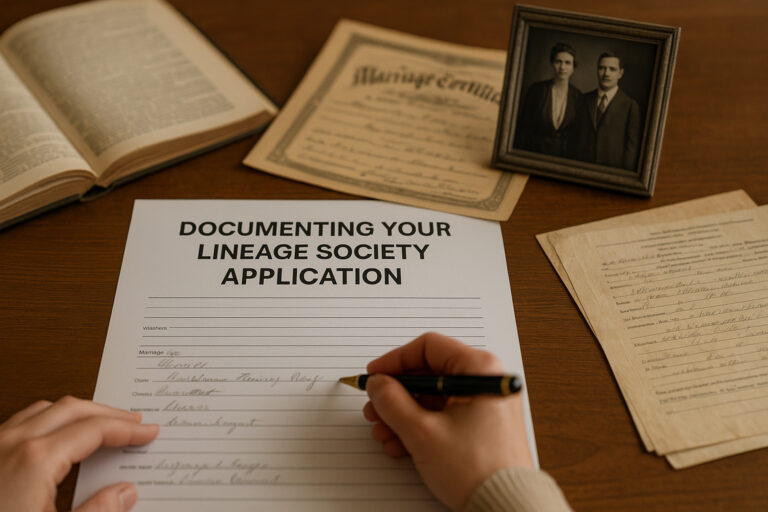
Book Documents the Lives and Lines of the Early Saints
For anyone interested in his or her own genealogical links to medieval Europe and early Christianity, Alan Koman’s book, A Who’s Who of Your Ancestral Saints, offers an extraordinary opportunity. In fact, Mr. Koman has retold the lives of 275 early European saints and attached to those biographies the lineages that connect the saints to twenty-four of the great men and women of medieval Europe. A Who’s Who of Your Ancestral Saints merges centuries of Catholic and Protestant scholarship, providing researchers the opportunity to discover if they are descendants of many of Europe’s early heroes.
To illustrate what readers can expect to find in Mr. Koman’s book, we have reproduced the author’s chapter on the English king, Edward the Confessor.
St. Edward the Confessor, King of England
Edward was born in 1004 and was the son of Aethelred Il “the Redeless,” King of England, and his second wife Emma of Normandy. During the Danish rule of most of England, Edward was taken to Normandy for his own safety and remained there from 1014 until 1043. He was tall, well-built, had a ruddy face, and never expected to become king.
After the death of the last Danish monarch, Edward was invited to return to England and crowned on 3 April 1043 to great popular acclaim. At the time, the large and well-connected family of Godwin, Earl of Wessex, was the strongest possible power base for Edward in England, and on 23 January 1045 Edward married Godwin’s daughter Edith.
Edward ruled for twenty-three years, and his reign is remembered as the last golden age of the Saxon kings of England. Edward was a deeply religious man who prayed often. He was generous to the poor and would lay his hands on the sick in the hope of healing them. Edward’s country was at peace and prospered. His most lasting spiritual achievement was the construction of Westminster Abbey.
Edward’s marriage to Godwin’s daughter Edith in 1045 may have seemed like a politically expedient idea at the time, but it would prove to be the undoing of his kingdom. Nine years earlier in 1036, Edward’s brother Alfred had returned to England and was seized, blinded, and ultimately slain on the orders of Godwin. Whether because of Edward’s dislike of his wife’s family or his personal vows of chastity, his marriage to Edith remained childless and was rumored to be unconsummated. When new trouble arose between Edward and Godwin in 1051, Edward had finally had enough, sent Edith off to a convent, and never brought her back. Years later as Edward lay dying at the end of 1065, his empty throne called forth three claimants: Harold the son of Godwin, Harold Haadraada, and Duke William of Normandy. The consequences for England were profound.
Edward died on 4 January 1066 and was buried in Westminster Abbey, where he remains today. He became the patron saint of the British royal family, and Westminster Abbey became the place where all later English monarchs would be crowned.
His Line
Aethelred 11 “the Redeless,”
King of England (b. 968 –d. 1016)
Married (1) Aelfgifu (or Elgiva or Aethelfleda or Allflaed) (b. ca. 968–md. 985), daughter of Thored (or Thorod or Torin) of Northumbria.
Aethelred and Aelfigu’s son Edmund “Ironside,” King of England (b. 989—md. (2) Aug 1015—d. 30 Nov 1016) + Ealdgyth (md. (2) Aug 1015), daughter of Morcar, High Reeve of Northumbria.
Edward “the Exile,” (b. 1016-md. ca 1043-d. 1057) + Agatha von Braunschweig (b. ca. 1025—md.ca. 1043—d. after 1066)
Malcolm III Canmore, King of Scotland (b. ca 1031—md. (2) 1068/1069—d. in battle 13 Nov. 1093 while besieging Alnwick Castle) + St. Margaret of Scotland (b. ca 1045—md. 1068/1069—d. 16 Nov. 1093)
Henry I, King of England (b. 1070—md. (1) 11 Nov 1100-d. Dec. 1135) + Matilda of Scotland (b. 1079—md. 11 Nov 1100—d. 1 June 1118
Married (2) Emma (b. 985/987 -md. 5 April 1002 -d. 14 March 1052), daughter of Richard I, Duke of Normandy
St. Edward the Confessor (1004-1066)




